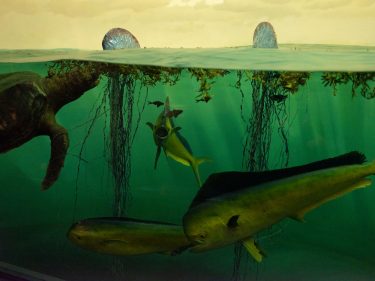
As greenhouse gas emissions continue to warm the world’s oceans, marine biodiversity could be on track to plummet within the next few centuries to levels not seen since the extinction of the dinosaurs, according to research from the University of Washington and Princeton University.
Oceanographers modeled future marine biodiversity under different projected climate scenarios. They found that if emissions are not curbed, species losses from warming and oxygen depletion alone could come to mirror the substantial impact humans already have on marine biodiversity by around 2100. Tropical waters would experience the greatest loss of biodiversity, while polar species are at the highest risk of extinction, according to the April 28 study in the journal Science.
“Aggressive and rapid reductions in greenhouse gas emissions are critical for avoiding a major mass extinction of ocean species,” said senior author Curtis Deutsch, who began the research as a professor of oceanography at the UW and is now at Princeton University.
The study found, however, that reversing greenhouse gas emissions now could reduce the risk of extinction by more than 70%.
“The silver lining is that the future isn’t written in stone,” said first author Justin Penn, who began the study as a graduate student at the UW and is now a postdoctoral researcher at Princeton. “The extinction magnitude that we found depends strongly on how much carbon dioxide we emit moving forward. There’s still enough time to change the trajectory of CO2 emissions and prevent the magnitude of warming that would cause this mass extinction.
Read more at UW News »
